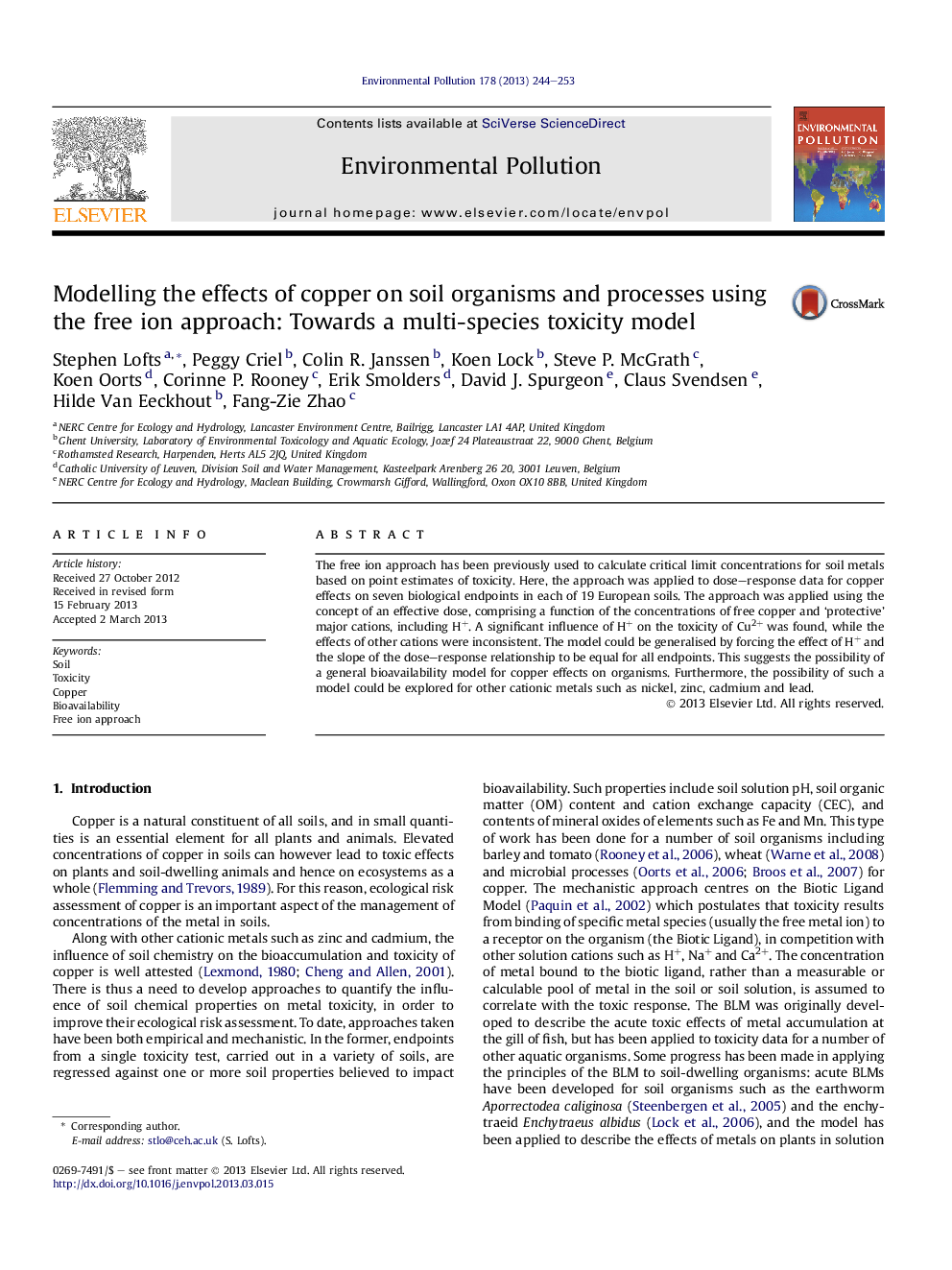| Article ID | Journal | Published Year | Pages | File Type |
|---|---|---|---|---|
| 6318932 | Environmental Pollution | 2013 | 10 Pages |
Abstract
The free ion approach has been previously used to calculate critical limit concentrations for soil metals based on point estimates of toxicity. Here, the approach was applied to dose-response data for copper effects on seven biological endpoints in each of 19 European soils. The approach was applied using the concept of an effective dose, comprising a function of the concentrations of free copper and 'protective' major cations, including H+. A significant influence of H+ on the toxicity of Cu2+ was found, while the effects of other cations were inconsistent. The model could be generalised by forcing the effect of H+ and the slope of the dose-response relationship to be equal for all endpoints. This suggests the possibility of a general bioavailability model for copper effects on organisms. Furthermore, the possibility of such a model could be explored for other cationic metals such as nickel, zinc, cadmium and lead.
Keywords
Related Topics
Life Sciences
Environmental Science
Environmental Chemistry
Authors
Stephen Lofts, Peggy Criel, Colin R. Janssen, Koen Lock, Steve P. McGrath, Koen Oorts, Corinne P. Rooney, Erik Smolders, David J. Spurgeon, Claus Svendsen, Hilde Van Eeckhout, Fang-Zie Zhao,
